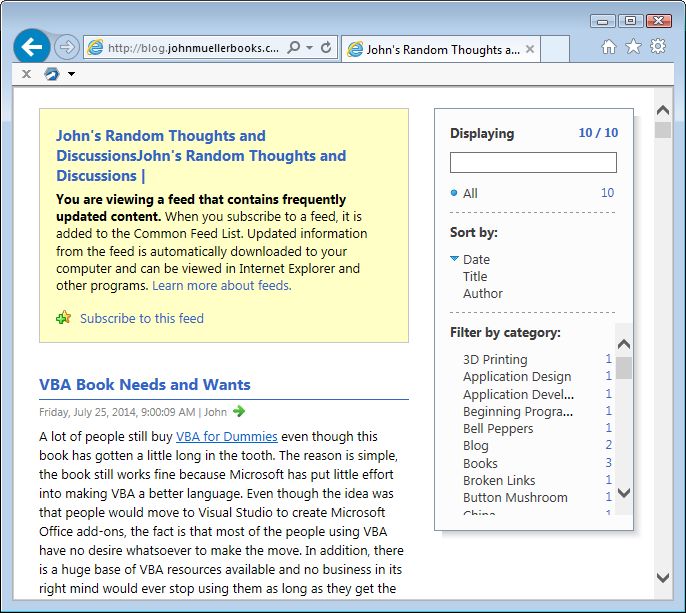The question of just how robots will affect us in the future consumes quite a bit of my time because I’m so interested in how they can be used for good. For example, robots are currently used to fight fires and to keep humans out of inhospitable environments. We also rely on robots to build some of the goods we enjoy and as a result, there are fewer assembly line accidents today than there were in the past (the quality of the output is also increasing). In the future, you can count on robot technology to help you remain independent, rather than ending up in a nursing home. There are even cars that rely on robots to drive them today and if things turn out as I expect, everyone will eventually use this sort of vehicle because robots will actually follow the traffic laws and reduce accidents as a result. In fact, it’s not too surprising to think that robots will appear in a lot of different situations that you don’t see them in today.
Humans are afraid of change. So, I’m also not surprised to find reports online that range from robots stealing jobs to terminator type robots killing us all off in order to save us (as in I, Robot). The fact is that robots really are under our control and as long as we exercise even a modicum of judgement, things will remain that way. I’m not saying that we couldn’t create a terminator-style robot. Recent advances in chip technology make it quite possible that we could create such a robot, but it’s important to ask why we’d ever do such a thing. In order for a new robot to become successful, there has to be a commercial reason to develop it and no one is interested in creating a terminator to destroy the human race.
What I think is more likely to happen is that robots will become companions to humans—devices that are both willing and able to take the risk out of human existence. The reduction of risk is an essential element in the robot/human relationship. We’ll continue to increase our use of robots as long as we can see a significant benefit to our personal lives. For example, it would be nice if we could eliminate the use of nursing homes altogether—that people could continue to live in their homes using robotic assistance. And, because those robots would be dedicated to the humans they serve, the standard of caregiving would increase dramatically. Of course, we have to get used to the idea of talking to a mechanical contrivance. Wait, we already do that—just consider how people interact with applications like Apple’s Siri.
Of course, people are asking what humans will do in the future if robots take on all of the tasks we have them slated for. For better or worse, the human condition has been changing at an ever more rapid pace over the last several years. If you look at just one statistic, you’ll miss what I’m trying to say here. For example, humans now live to an average age of 80 in many areas of the world—the average age will only increase barring some major change. People have children later in life now and focus more on career during the early years. Schools focus on getting kids to college and the college courses are becoming more challenging. In short, the environment in which we live today will change significantly in the next 40 or 50 years—to the point that most people won’t recognize the future as being any part of the past.
The change that has grabbed my attention most though is how much technology is now incorporated into humans (and the pace is only increasing). Yes, most of the technology currently does things like help people walk—it meets accessibility requirements. However, it’s only a matter of time before the technology will be used to help extend life and potentially make humans better adapted at excelling at tasks that we can’t even imagine now. So the question isn’t one of robots stealing jobs or killing us off terminator style, it’s one of understanding that humans are changing is a significant way and we’ll actually need robots to excel in the future. Let me know your thoughts about robots and our future at [email protected].


